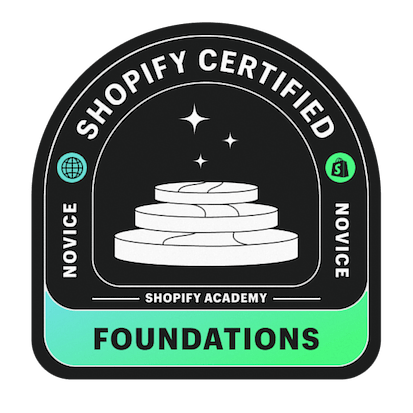If you dream of running your own business and being in control of your future, starting an ecommerce business could be a great idea. Lots of people are buying things online now, and it’s easier than ever to reach them. Starting now is a smart move. But for beginners, it can be overwhelming. According to research, experts predict that by 2040, 95% of shopping will be online. So, if you want to learn, let’s begin discussing how to start an ecommerce business:
Research and Choose Your Niche
The first step is deciding what to sell. This can be tough, but there are ways to figure it out. Start by writing down a problem you want to solve, then brainstorm products that could help. For example, if people struggle to focus while working from home, products like a productivity journal or noise-canceling headphones could help.
Market Research
Once you have some ideas, you can research online to learn more about those markets. Websites like Trend Hunter and Reddit can inspire you. Social media can also be helpful. Look for trending hashtags or popular products on sites like Amazon and Etsy.
There are several websites where you can find inspiration and conduct market research depending on your industry and interests. Here are some popular ones:
- Behance
- Dribbble
- Google Trends
- TrendHunter
- Quora
- Industry-specific forums and communities
Pro Tip: Remove any that are too big, fragile, or perishable. These will be difficult to sell online. You also want to check if there’s enough demand for your product. Use tools like Google Trends and keyword research to see if people are searching for it.
Business Plan
Now, look at your list of potential products and create a business plan. Create a business plan outlining your objectives, target market, marketing strategies, sales projections, budget, and operational plan. You also need to decide on the type of ecommerce business you want to start, whether it’s dropshipping, wholesaling, private labeling, or manufacturing your products.
Key Components of a Business Plan:
- A summary of your business, including your mission, goals, and what you sell.
- Your market and competitor analysis. Check out your competition. This is important because it shows there’s already a demand for your product.
- Your products and services details about what you’re selling and what makes it different.
- Gathered Information about who your target customers are.
- Your marketing plan and how you’ll promote your products and reach your customers.
- Your logistics and operations. Include how you’ll run your business, including suppliers and shipping.
- Your detailed financial plan. These are the Information about your business’s finances, like income and expenses.
Create Your Brand Name
Once you have your business plan, it’s time to build your brand. A good name is essential for a memorable brand. Tools like Shopify’s name generator or brainstorming with trusted people can help. If you’re stuck, consider crowdsourcing a name on a platform like namingforce.com. Make sure the name you choose reflects your brand well.
Pro Tip: Generate a brand name containing your researched keyword.
Legalize Your Ecommerce Business
Making sure your ecommerce business is legal is really important for working with suppliers and avoiding tax issues. It means following rules and laws so you don’t get in trouble. When your business is legal, it protects you from getting into personal trouble if something goes wrong. It also helps people trust your business more and shows you’re running it in a good way. By following the rules, you avoid getting fined or punished, and you keep your ideas safe from being stolen.
Here are some steps you can take in making your ecommerce business ensure that you follow all the necessary rules and regulations to operate legally:
Step 1: Choose a Business Structure
Decide whether you want to operate as a sole proprietorship, partnership, LLC, or corporation. Each has different legal and tax implications.
Step 2: Register Your Business
Register your business name with the appropriate government authorities. This might include registering a “Doing Business As” (DBA) name or obtaining a business license.
Step 3: Get an Employer Identification Number (EIN)
Get an Employer Identification Number (EIN): If you have employees or operate as a corporation or partnership, you’ll need an EIN from the IRS.
Step 4: Set Up Sales Tax Collection
Determine whether you need to collect sales tax in the states where you operate. Register for sales tax permits in those states and set up systems to collect and remit sales tax.
Step 5: Comply with Online Business Laws
Familiarize yourself with consumer protection laws, advertising regulations, data protection laws, and any other relevant regulations that apply to your business.
Ensure that your website complies with laws related to online businesses, such as the California Consumer Privacy Act (CCPA), General Data Protection Regulation (GDPR) if serving customers in the European Union, the Children’s Online Privacy Protection Act (COPPA) if targeting children under 13 years old, and the Federal Trade Commission (FTC) regulations regarding online advertising, consumer protection, and data security.
Step 6: Legal Agreements
Create terms of service, privacy policies, and any other necessary legal agreements for your website. These documents outline the terms of use for your site and help protect your business legally.
Step 7: Secure Necessary Permits and Licenses
Depending on your location and the nature of your business, you may need additional permits or licenses to operate legally. Research the requirements in your area and obtain any necessary permits or licenses.
Step 8: Consult with Legal Professionals
Consider consulting with lawyers or other legal professionals who specialize in ecommerce or business law. They can provide personalized advice and ensure that you’re meeting all legal requirements.
Shipping Strategy
Before you start selling anything, it’s really important to plan how to send your products to customers. Many new ecommerce business owners begin by handwriting the ship to and return addresses on the package. While this can be a good start, it’s time-consuming and not scalable as your business grows. Shopify shipping solves this issue by allowing you to print and pay for multiple shipping labels directly in Shopify. Fulfillment warehouses are also important. Shipping can be one of the trickier parts of starting an e-commerce business, but fulfillment warehouses help by automating and handling the shipping for you.
Here are some simple things to think about that will help you set up a smooth delivery system:
- Who pays for sending the products? Do customers pay for it, or do you offer free sending, or do you charge a fixed fee? Each option has good and bad points, so you need to decide.
- You also need to think about how much it costs to send things and the different ways to do it. The cost depends on products like how big and heavy the package is, where it’s coming from and going to, which company is delivering it, and if you want extras like tracking or insurance. If you’re based in the US or Canada, you can pay for USPS, UPS, DHL Express, and Canada Post shipping right through Shopify and get discounted rates.
- You can get free boxes from delivery companies or you can buy your own with your logo on them. Remember, how you package things is part of the experience for customers, which is important for your brand.
- If you’re sending your products to another country, you’ll need to fill out some paperwork. Your country’s postal service can tell you exactly what forms you need to include.
Building Your Ecommerce Store
One of the things you need to consider when starting an ecommerce business is building your ecommerce store. Shopify is the most famous platform when it comes to creating an ecommerce store because it is known for being easy to use, flexible, and having lots of helpful features. That’s why many people choose it for their ecommerce business. We’ve listed the guides to help you create your ecommerce store:
- Sign Up and register for a Shopify account.
- Provide your basic information and details about your store during the sign-up process.
- Select the Shopify plan that aligns with your business needs and budget from the available options.
- Set up the payment methods, including major credit cards and PayPal, to streamline the purchasing process for your customers.
- Shopify offers affordable website templates to get started quickly. Explore and select a theme from Shopify’s collection that best reflects your brand’s identity and vision.
- Personalize the chosen theme by incorporating your logo, adjusting colors, and making other design modifications to create a unique storefront.
- Populate your store with your products, ensuring each listing includes comprehensive information like product names, descriptions, and prices. Create collections to categorize your products and facilitate easier navigation for your customers.
- Set up shipping and tax rates to ensure clear and fair charges for your customers’ orders.
- With everything set up, your Shopify store is ready to go live, allowing you to start selling your products to customers worldwide.
Key Points to Consider in Creating an Ecommerce Website
Creating an ecommerce website is an important step in starting an ecommerce business. Here are some points you might want to know about creating an ecommerce website:
- Choose Your Ecommerce Platform
- Domain Name and Hosting
- Design and Customization
- Product Listings and Descriptions
- Payment Gateways and Security
- Shipping and Fulfillment
- Search engine optimization (SEO) and Social Marketing
- Customer Support and Feedback
Pro Tip: Don’t forget to learn the basics of Search engine optimization (SEO) before building your site. It helps people find your website on search engines like Google.
However, we understand the challenges ecommerce business owners face when it comes to designing and developing their ecommerce stores, especially for those who may not be tech-savvy. We recognize the time and effort it takes to create a successful ecommerce website, which is why we’re here to help.
As a Google-certified Shopify agency, we specialize in designing, developing, and optimizing efficient ecommerce websites that drive sales and maximize profitability. With our expertise in Shopify store design and development, SEO, and paid advertising, we can ease the burden and complexity of building your online store. Let us simplify the process for you and make it easier to achieve your ecommerce goals. Partner with us today to save time, effort, and frustration!
FAQS about Ecommerce Business
What is ecommerce business?
An ecommerce business refers to buying and selling goods or services online through websites or online platforms instead of in physical stores. It’s like shopping on websites such as Amazon, eBay or Shopify. You can buy products and have them delivered to your home without going to a store.
What are the types of ecommerce businesses?
Business to consumer (B2C): This is when you sell something directly to a regular person. (Eg. when you buy a shirt from an online shop)
Business to business (B2B): This happens when one business sells products to another business. (Eg. a company might sell bulk products to another company to use in their own business)
Consumer to consumer (C2C): This occurs when one regular person sells a product to another regular person. (Eg. if you sell your old phone to someone else on a website like Facebook Marketplace)
Consumer to business (C2B): This is when a regular person sells something to a business. (Eg. if someone with a big following on social media gets paid by a company to promote their product to their followers)
What are the benefits of offering free shipping?
Giving free shipping can make customers happy and make them more likely to buy from you. It can also make your business stand out from others. But sometimes, offering free shipping can make it harder to make a profit because you have to pay for shipping costs yourself.
How do packaging choices affect brand perception?
The way you package your products can make people think differently about your brand. If you use nice packaging, people might think your products are better quality. But if your packaging looks cheap, they might not trust your brand as much.
How do you handle returns and exchanges?
Dealing with returns and exchanges means having rules for when customers want to send things back or trade them for something else. It’s important to make this process easy for customers so they’ll keep buying from you. You also need to keep track of returned items and give refunds or exchanges quickly.
What are the best shipping methods for fragile items?
Fragile items, like glass or delicate things, need special care when shipping. It’s best to use strong packaging materials and choose shipping services that handle fragile items carefully. You might also want to get insurance in case something breaks during shipping.
What strategies can reduce shipping delays?
To avoid shipping delays, you should have good systems in place for packing and sending orders quickly. It’s also important to use reliable shipping companies and keep customers informed about their orders. Planning and being organized can help prevent delays.
How do you calculate shipping costs accurately?
Figuring out how much it costs to ship things depends on products like how big the package is, how much it weighs, and where it’s going. You also need to think about any extras like tracking or insurance. Adding up all these things helps you know the real cost of shipping.
Is it hard to start your own ecommerce business?
Starting an ecommerce business is easy. Nowadays, there are a lot of platforms that will help you build your ecommerce business like Shopify, which allows you to establish your online store within a few days. However, creating a business plan, establishing your brand, and ongoing market research are much needed to enhance your ecommerce business. We recommend reading this full guide on how to start an ecommerce business this 2024 before launching.
What are the advantages and disadvantages of dropshipping?
Dropshipping can be good because you don’t need a big capital to start, and you don’t have to keep stock. But it can also be hard because you rely on other people to send out your orders, and you might not have much control over the quality of the products or how long they take to get to customers.
Is ecommerce a profitable online business?
Selling products online can make money if you do it right. But it depends on lots of products like what you’re selling, how much you’re charging, and how many people buy from you. If you offer good products, good prices, and good service, you’re more likely to make a profit.




 Development E-Commerce Setup
Development E-Commerce Setup



